Overview of software for topological optimization and bionic design
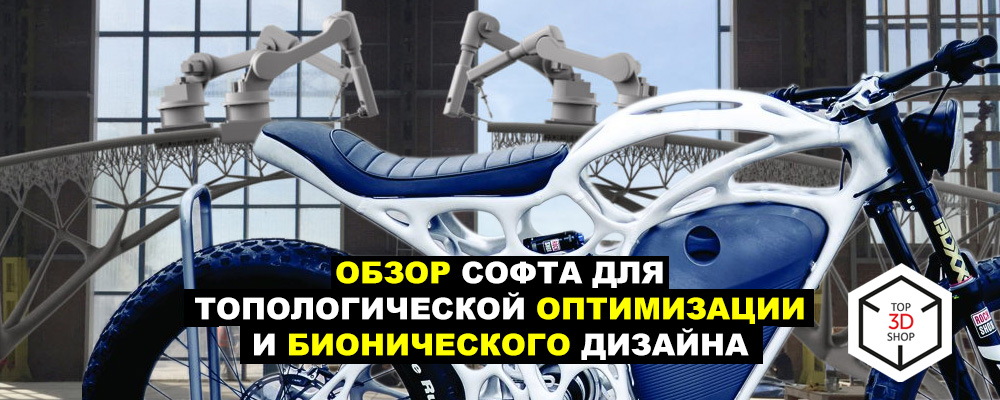
Biodesign, or bionic design method involves the use of effective solutions in the developed designs borrowed from nature. In general, these are smooth lines, the distributed structure of thin solid or tubular structures. Biodesign is a special case of topological optimization, a means of achieving the optimal combination of mechanical strength and lightness, by well-calculated distribution of material in the part, as a rule, with the complexity of its structure.
In this article, we look at software that can handle these tasks.
How it works
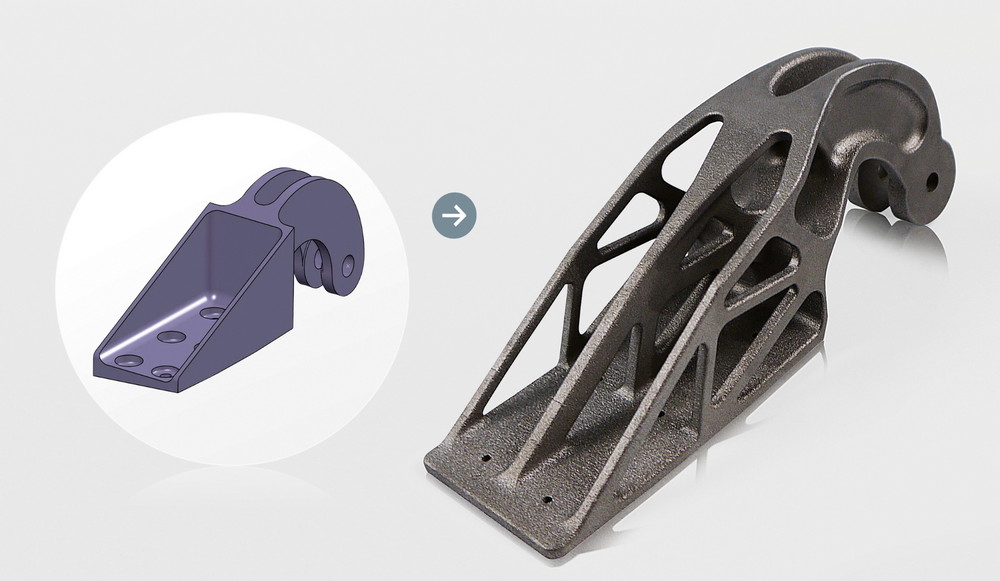
Modern design tools allow not only to predict the degree of deformation of the part, but also to optimize it, in accordance with the specified framework of mass and strength. In the general case, a model blank is prepared, from which excess material is subsequently removed. This process is called topological optimization. Another term often used in this context is “generative design,” which means design, partially performed by software algorithms. The result of topological optimization is a complex structure, on the basis of which a part model for production is formed. Such a part has the required strength with a minimum mass, but is difficult to manufacture by traditional methods, the additive production will be optimal.
Implementation examples
Products made using generative design have an unusual futuristic look and often serve to demonstrate the capabilities of additive technologies.
BMW S1000RR

Here, for example, BMW, to demonstrate the prospects of technology, made a concept bike based on the S1000RR, but with a light 3D-printed metal frame. If we talk about more utilitarian applications - BMW is already using 3D printing in the production of Rolls-Royces and i8 roadsters.
MX3D bridge

The Dutch from MX3D finished the production of the bearing foundation of the bridge, which is planned to be installed in Amsterdam in 2019. In the manufacture of the bridge, Autodesk software and WAAM technology were used - the fusing of a metal bar by an industrial robotic arm.
Russian industry
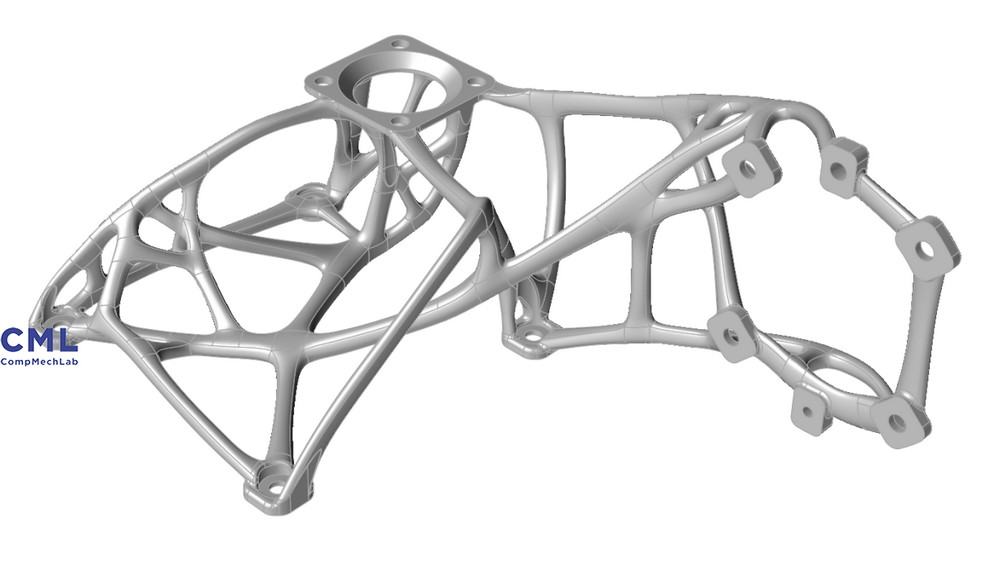
We do not print bridges yet, but in utilitarian areas topological optimization will be successfully applied. For example, SPbPU Computer Engineering Center is working in this direction using its own software. More information about the tasks to be solved can be found on the website of the center, here we note that we are talking mainly about the aerospace industry.
Software - Integrated Systems
There is a significant amount of software products on the market through which it is possible to make calculations for topological optimization. As a rule, this functionality is provided by packages that produce strain modeling and strength calculations. Let's start with the “large” complexes used for design and calculations in mechanical engineering.
Siemens NX
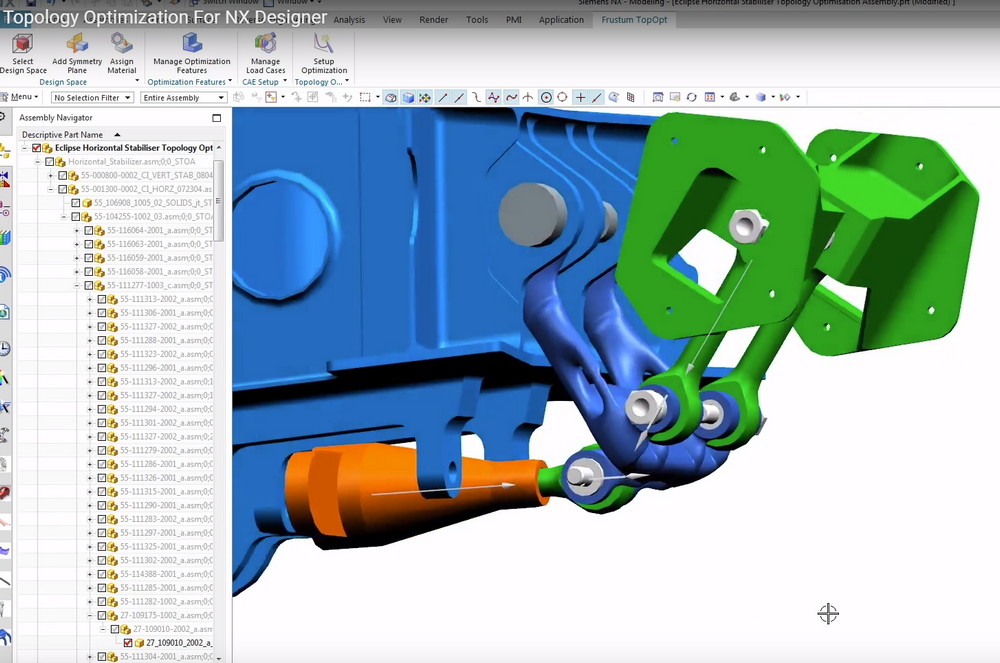
NX is a universal complex system for design, engineering calculations and preparation of a control code for CNC machines - CAD, CAE and CAM. Topological optimization in the framework of the NX CAE module is focused on the interaction of parts in the CAD-assembly.
The part to be optimized is placed in the workspace; others are added to it that are not affected by the process but participate in the interaction. The indication of fastenings and the enclosed loadings is made within assembly.
Siemens Solid Edge

Solid Edge is a CAD system for solid and surface modeling, primarily designed to work with parts and assemblies, but with an integrated engineering analysis module. The developer positions Solid Edge as a means of rapid design and prototyping, "sharpened" by additive manufacturing.
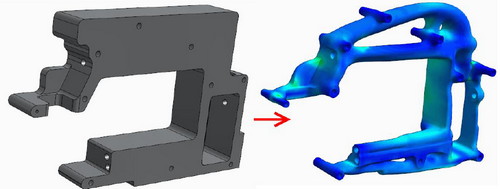
Optimization is performed in several steps, without the need for fine tuning: load the “blank”, specify the holes and places of application of the load, set the required weight reduction and safety margin. The resulting part can be directly sent to print or modified with regular Solid Edge tools.
CATIA 3DEXPERIENCE

The 3DEXPERIENCE platform, as of the beginning of 2018, consists of 104 modules, which are called roles. These are solutions for various design tasks, development process management, simulation, visualization. One of these roles is Function Driven Generative Designer.
This role not only makes it possible to optimize the topology of the part in accordance with the specified requirements, but also to refine the resulting object — to simplify, remove irregularities.
SOLIDWORKS

Topology optimization was added to SOLIDWORKS 2018. It is available in the SOLIDWORKS Simulation module of the Professional and Premium editions. The engineer indicates the loads, the optimization conditions — for example, the best stiffness-to-mass ratio, and starts the topology study. Upon completion of the process, in order to prepare for production, the mesh of the optimized part is smoothed.
Autodesk Fusion 360
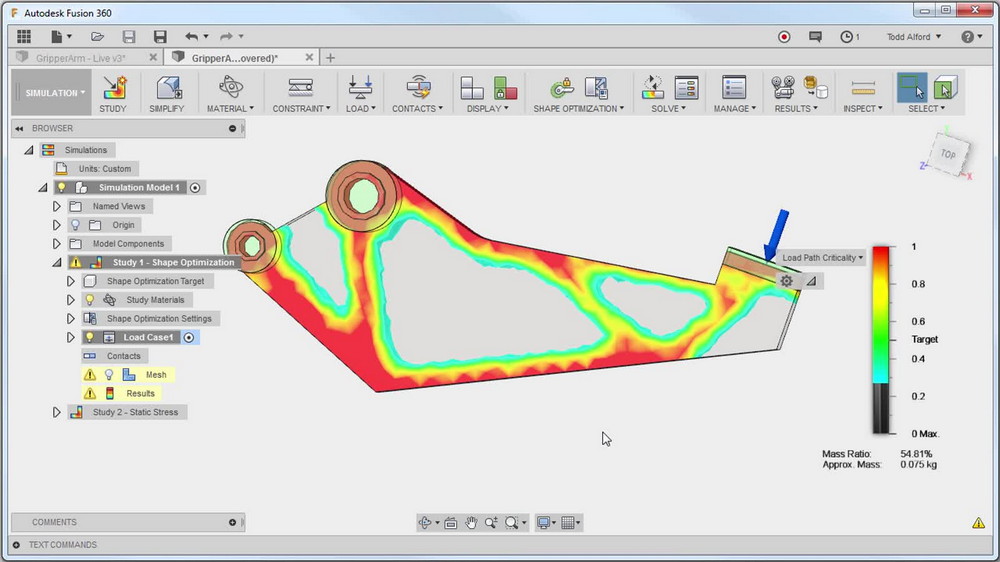
Cloud platform for design, engineering calculations and preparation for production on CNC machines - CAD / CAE / CAM. In the maximum subscription, which is called Ultimate, the Advanced Simulation module is available. He is responsible for modeling the deformations, working with anisotropic materials and optimizing the topology - Shape optimization.
The possibilities for adjusting the optimization are not very wide, but for the main task - creating a part with a minimum mass and the necessary strength - are sufficient.
ANSYS Mechanical

The main functions of this software product are:
- static calculations;
- dynamic analysis;
- thermal calculations;
- acoustic calculations.
ANSYS Mechanical allows you to simulate the deformation of structures under load, calculate the influence of vibrations and the occurrence of resonances. To perform automated topological optimization, it is necessary to import the model of the workpiece, specify attachment points and load applications, specify boundary conditions, such as minimum thickness. It is possible to model both traditional materials and anisotropic ones - composites, 3D-printed parts.
Simpler and more accessible software.
Let's move from “heavy” industrial software to solutions that are less functional, have a lower threshold of entry and a relatively affordable cost.
solidThinking Inspire
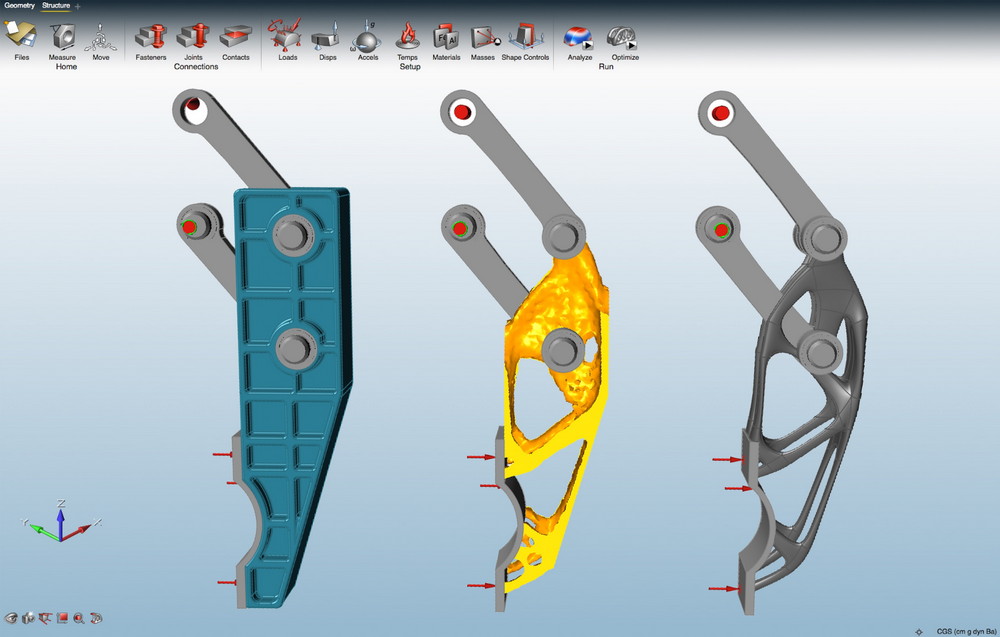
In comparison, for example, Ansys Mechanical is more user-friendly software, designed to solve several narrow problems - modeling the interaction of parts in assemblies, simple outline design, topological optimization. The objects you need to work with can be either created in Inspire or imported from other CAD systems.
After “cutting off the excess”, the optimized part is simplified and smoothed, which significantly improves the appearance and allows you to immediately send it to production.

In addition to topological optimization, Inspire is capable of forming a net filling instead of a solid one; this feature is useful if you need to further reduce the mass of the part.
Autodesk Netfabb Ultimate
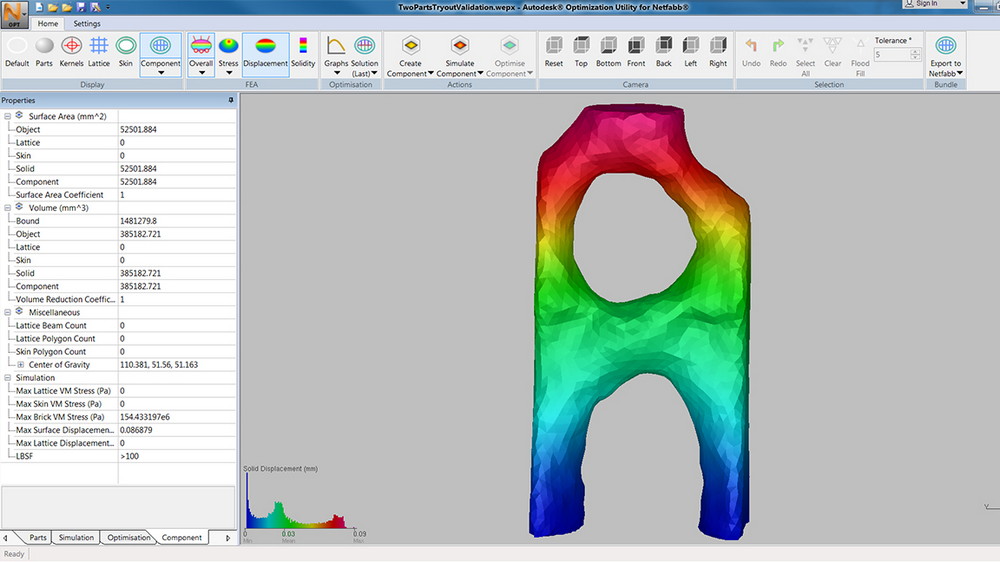
This program is known to many users of 3D printers as a convenient means of “repairing” the grid and dividing the model into parts. The functionality of Netfabb 2018 is much wider - there, for example, there is the creation of branching support structures for FDM printing, the modeling of the deformation of metal parts for SLS and SLM, and the Ultimate editions add topological optimization and the generation of mesh filling.
For what and for whom

Now topological optimization tools, mainly components of large CAD / CAM / CAE development packages from Siemens, Dassault Systèmes, Autodesk. And this technology is used, if not to talk about purely demonstration purposes, mainly in 3D printing with metal alloys. Generative design, in combination with the strength analysis, solves the problem of reducing the mass of the product while maintaining strength, which is important not only in the aerospace industry. In any production, material savings will lead to lower costs, especially when it comes to expensive metal powders.
It is difficult to call most of the described software products easy to learn and financially accessible. But there are more simple solutions, for example - solidThinking Inspire. It can be assumed that, with a decrease in the cost of equipment and consumables for printing with metals and engineering plastics, relatively simple topological optimization tools will become more widespread.
To get advice on the choice of software and purchase software for CAD / CAM / CAE, contact Top 3D Shop . We will help with the choice of software products and equipment for solving any problems of prototyping and production.
Want more interesting news from the world of 3D technology?
Subscribe to us in the social. networks:




